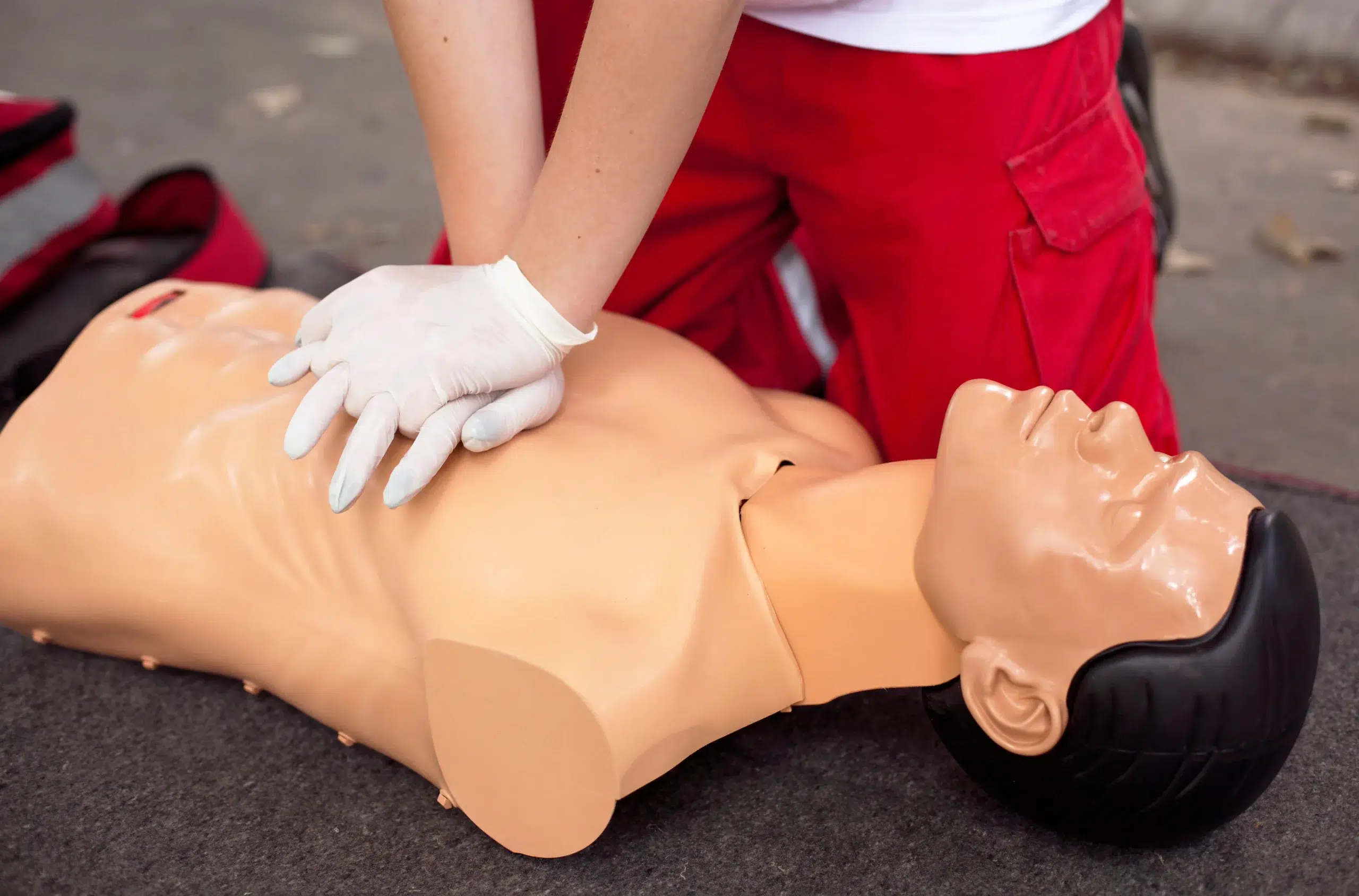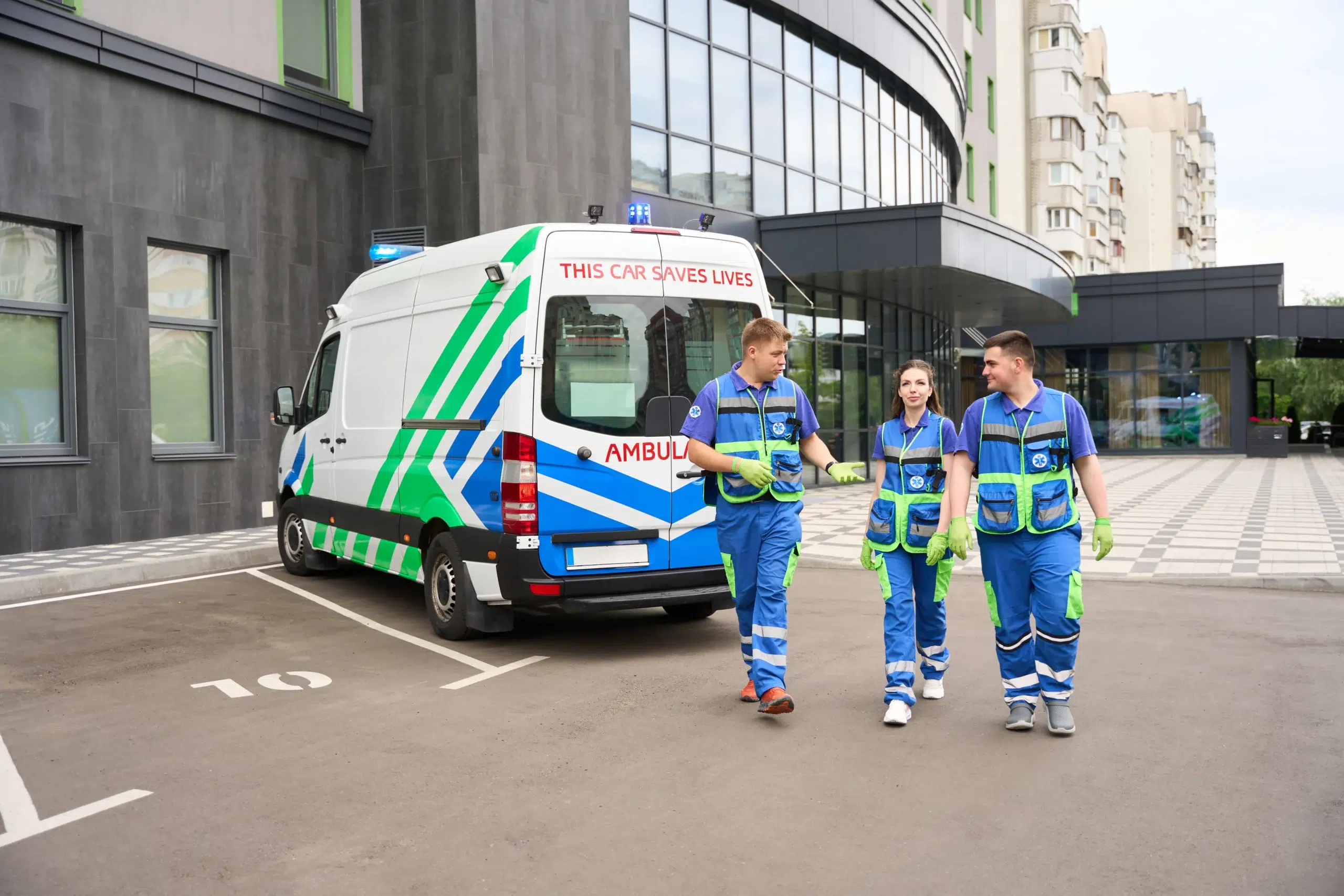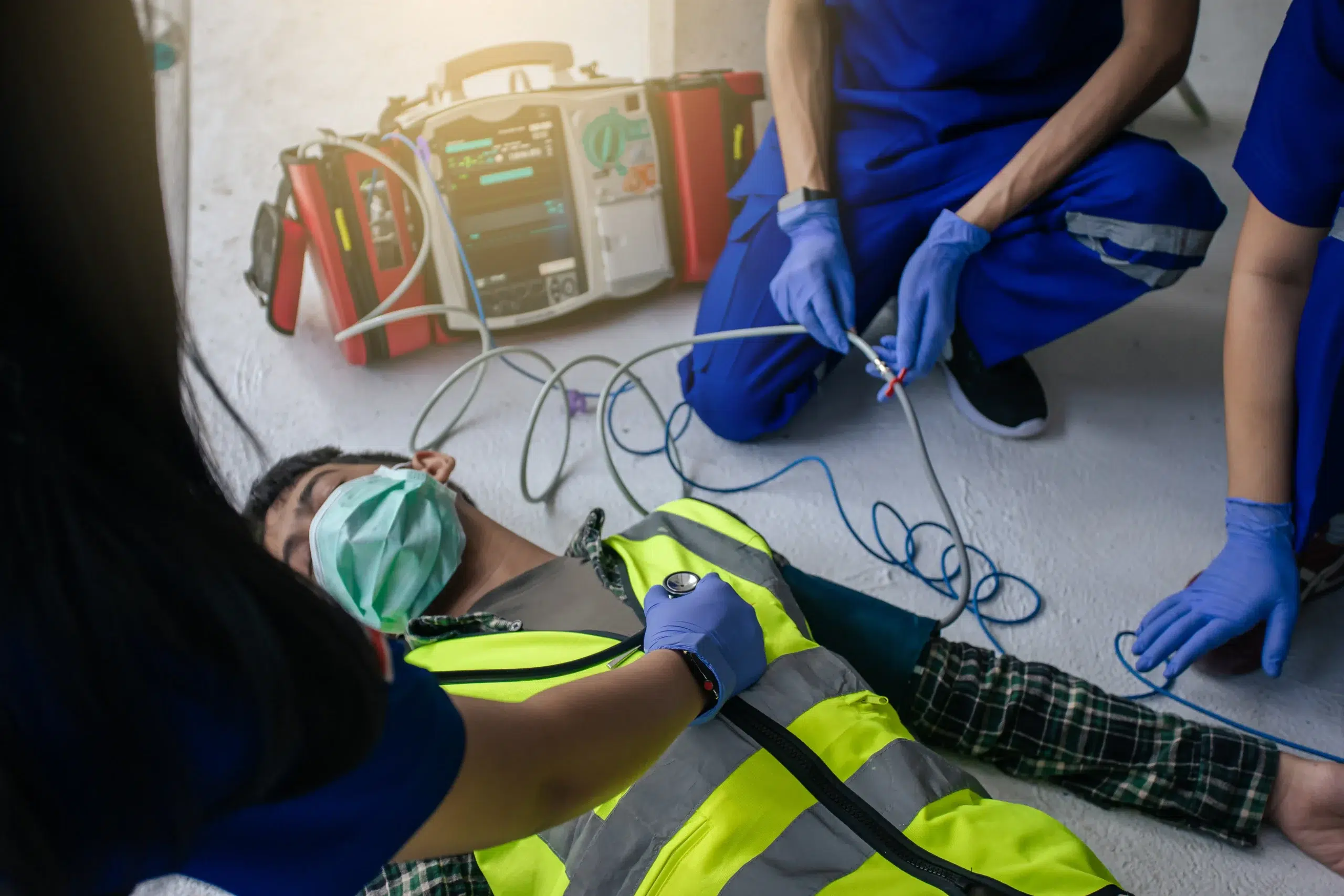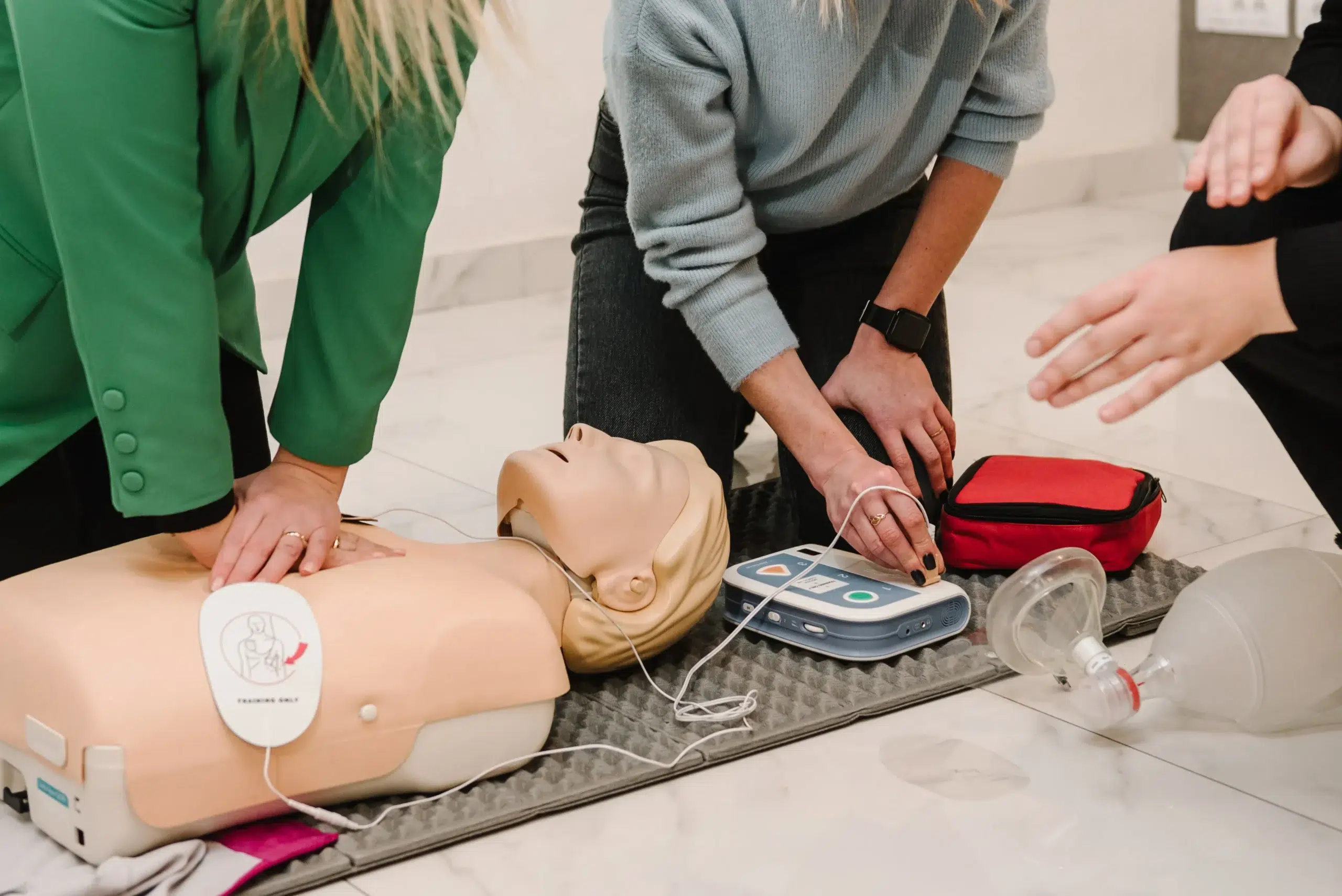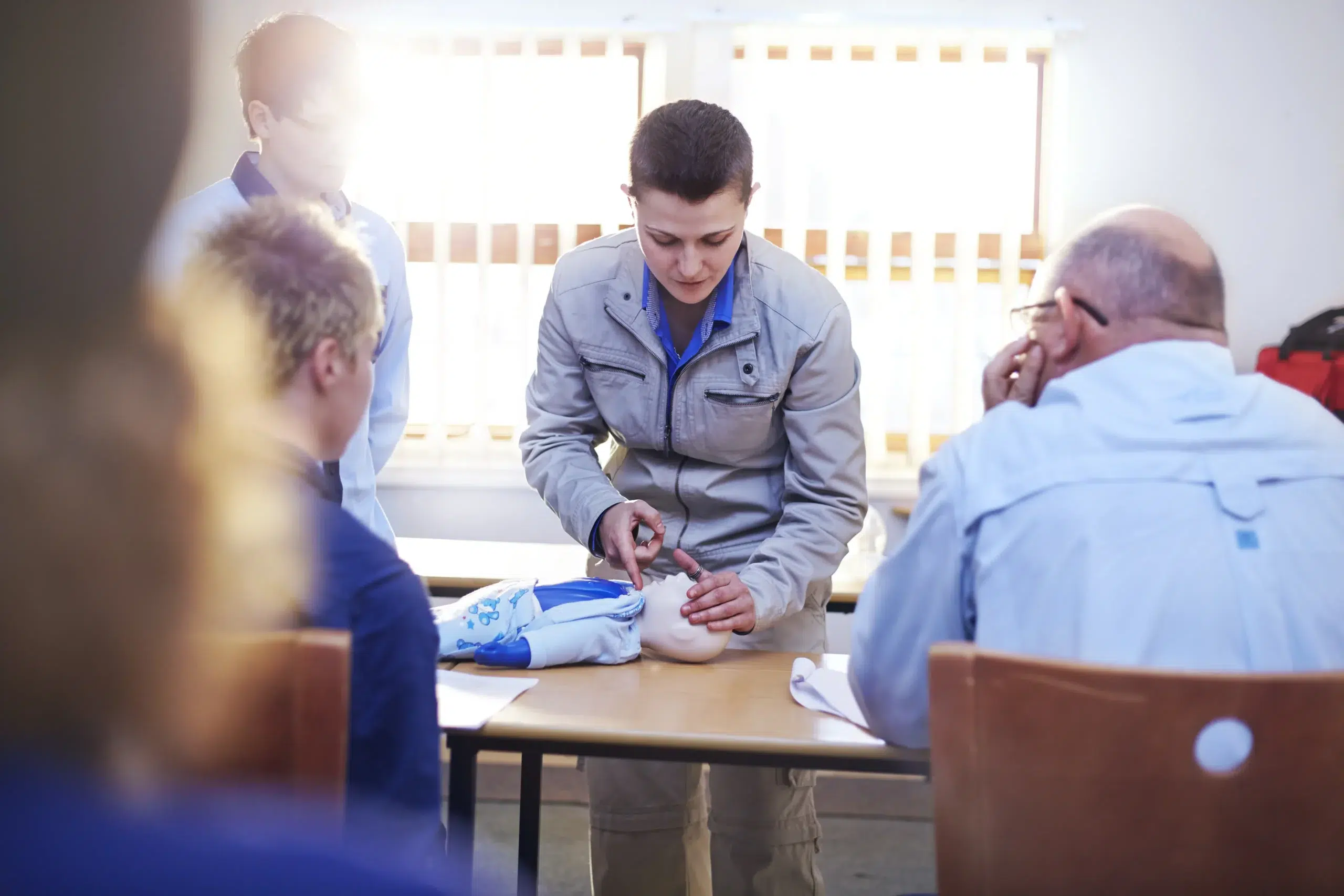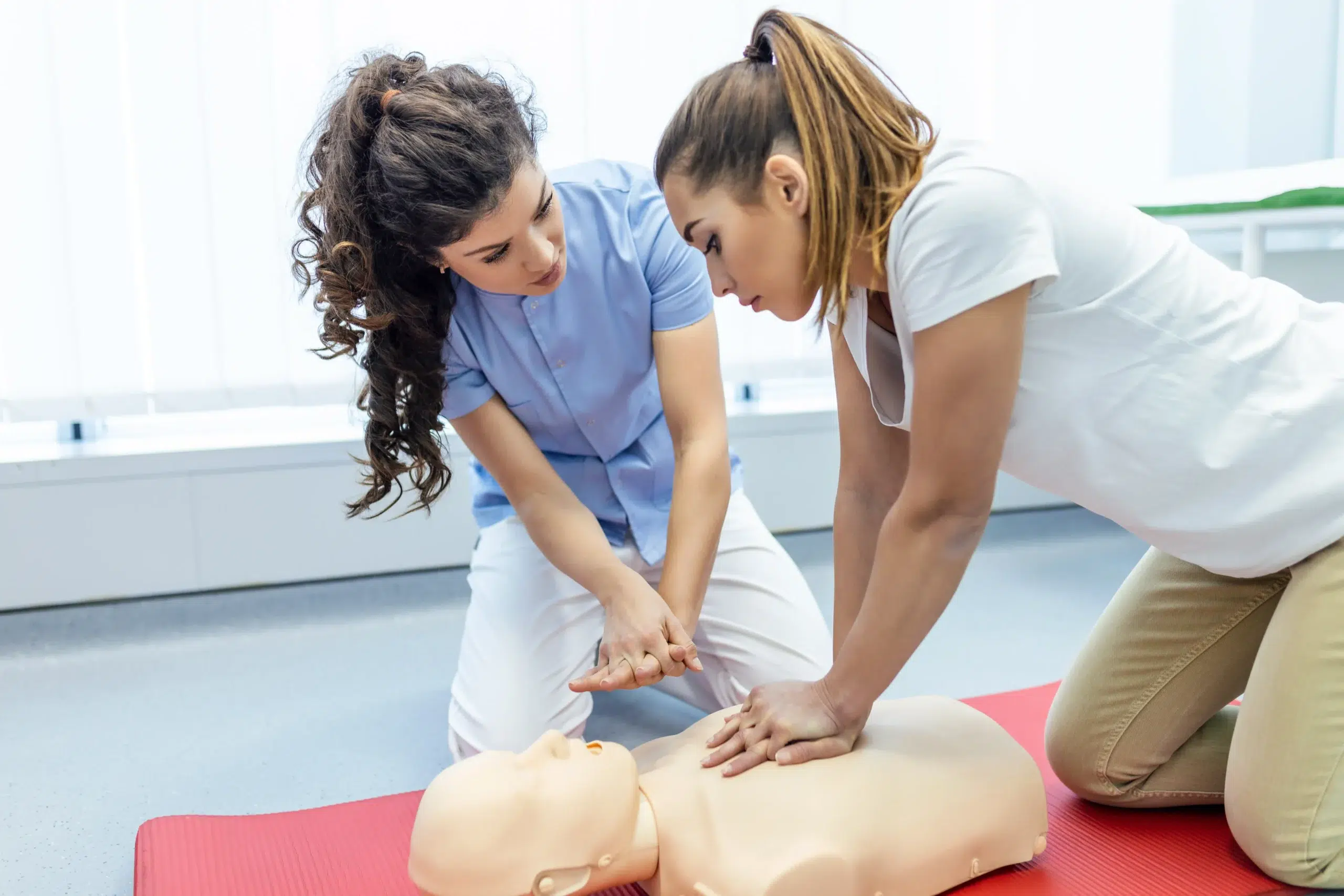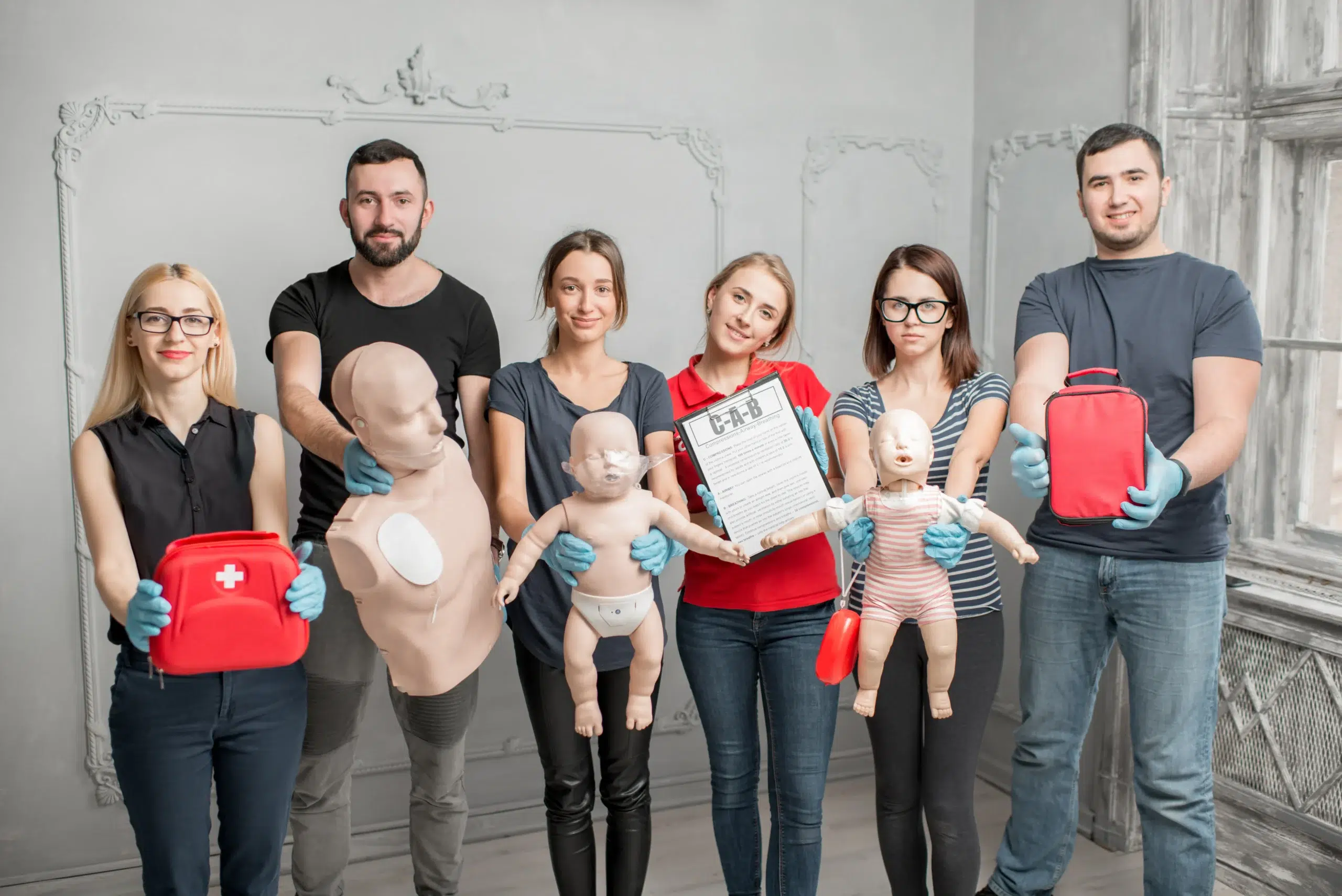In a medical emergency, seconds can matter. Knowing CPR can give you the confidence to act quickly and potentially save a life. But with so many options available, finding the right CPR training can feel overwhelming. This guide simplifies the process, providing a clear overview of CPR and guiding you through the steps to become certified. We’ll explore different types of CPR training, discuss the costs and time commitment, and offer tips for choosing a reputable provider. Whether you’re searching for “CPR courses near me” or exploring online options, we’ll help you find the perfect fit. Let’s empower you to make a difference.
Key Takeaways
- CPR training empowers anyone to save a life: From basic CPR to advanced certifications, find a course that fits your needs and learn how to respond to emergencies.
- Select a CPR provider that prioritizes quality: Look for experienced, certified instructors, hands-on practice, and up-to-date equipment. Accreditation ensures your training meets industry standards.
- Maintain your CPR skills through ongoing practice: Regular refresher courses and advanced training options keep your skills sharp and your confidence high, so you’re always prepared.
What is CPR?
CPR stands for cardiopulmonary resuscitation. It’s a lifesaving technique used when someone’s breathing or heartbeat has stopped. This can happen during a heart attack, near drowning, or other medical emergencies. CPR involves chest compressions and, sometimes, rescue breaths. These actions help maintain blood flow to the brain and other vital organs. Knowing CPR can give you the confidence to act quickly in a crisis.
CPR for Everyone
CPR isn’t just for medical professionals—anyone can learn it. From healthcare providers and teachers to parents and babysitters, having this skill can make a real difference. Even if you’ve never had any medical training, CPR certification courses break down the steps into easy-to-understand techniques. This empowers you to provide immediate assistance in an emergency. Learning CPR can give you valuable skills to help friends, family, and your community.
Advanced Life Support (ALS)
Advanced life support (ALS) goes beyond the basics of CPR. It involves more complex medical procedures typically performed by healthcare professionals like paramedics, nurses, and doctors. ALS training covers advanced airway management, medication administration, and other critical care techniques. These advanced skills are essential for providing comprehensive medical care in serious emergencies. ALS certification is often a requirement for many healthcare professionals.
Specialized CPR Training
Specialized CPR training caters to specific groups, such as healthcare providers, teachers, and childcare workers. These specialized courses often include tailored content relevant to the unique situations these professionals might face. For example, a CPR course for childcare providers might cover CPR techniques specific to infants and children. This targeted approach ensures that professionals have the skills and knowledge to respond effectively in their respective environments. If you’re interested in specialized training, check with your employer or licensing board for specific requirements.
CPR Training: Cost & Time
Getting CPR certified is a valuable investment, but it’s smart to understand the costs and time commitment involved before signing up. This section breaks down what you can expect so you can find a course that fits your budget and schedule.
Pricing & Discounts
CPR course costs vary depending on the level of certification you need and the training center you choose. Basic CPR and First Aid classes are typically the most affordable, while advanced certifications like ACLS and PALS typically cost more. Many training centers, including Pleasant Hill CPR Classes, offer discounts for groups, students, or organizations. It’s always a good idea to check with your local providers about potential discounts and to look for a low price guarantee.
Course Length & Commitment
The time commitment for CPR training depends on the course type. You can often complete basic CPR certification in a single day, while more advanced courses like BLS, ACLS, and PALS may take two days. Pleasant Hill CPR Classes offers various course formats, including in-person, online, and blended learning, to accommodate different learning styles and schedules. The availability of daily classes makes it easier to find a convenient time.
Certification & Renewal
Most CPR certifications are valid for two years. You’ll need to take a renewal course before your certification expires to maintain your skills and credentials. Pleasant Hill CPR Classes offers renewal courses for various certifications, including BLS, ACLS, and PALS. The RQI program provides a streamlined and efficient way for healthcare professionals to renew these certifications, fitting busy schedules and ensuring ongoing competency. You can learn more about the RQI program on their website.
Choosing a CPR Provider
Finding the right CPR class is an important decision. Whether you’re a healthcare professional, a childcare provider, or just someone who wants to be prepared for emergencies, the quality of your training matters. Here’s what to look for when choosing a CPR provider:
Instructor Expertise
Experienced, certified instructors are key to a good learning experience. Look for a training center with instructors who have a strong background in healthcare and emergency situations. For example, Pleasant Hill CPR Classes has nearly three decades of experience and offers BLS training tailored for both healthcare professionals and community members. Knowing your instructors are experts will give you confidence in the skills you learn.
Facility & Equipment
Hands-on practice is essential for developing CPR skills. A good training facility should offer a comfortable learning environment and provide access to up-to-date equipment, including CPR training mannequins. Local classes, like those offered at Pleasant Hill CPR Classes, prioritize this hands-on approach, allowing you to practice the techniques you learn in a realistic setting.
Accreditation
Accreditation ensures your training meets industry standards. Choose a provider that offers certification from a recognized organization like the American Heart Association. Pleasant Hill CPR Classes offers a range of AHA-certified courses, including BLS, ACLS, PALS, and First Aid. This accreditation not only validates your training but also ensures you receive high-quality instruction that aligns with current best practices. Pleasant Hill CPR Classes also offers a low price guarantee and flexible scheduling options to make training accessible.
What Happens in CPR Training?
CPR training equips you with the skills and confidence to respond effectively during cardiac emergencies. But what can you expect when you attend a CPR class? Let’s break down the typical CPR training experience.
Course Content & Materials
CPR training covers essential life-saving techniques and knowledge. You’ll learn to recognize the signs of a cardiac arrest, when to call 911, and how to perform chest compressions and rescue breaths. Many courses, like those offered at Pleasant Hill CPR Classes, also include AED training and how to help a choking victim. The curriculum typically follows guidelines established by organizations like the American Heart Association, ensuring you receive high-quality, standardized instruction. You’ll receive informative materials, often including a student manual, to guide you through the course and serve as a later reference.
Hands-on Practice & Feedback
CPR training isn’t just about lectures and textbooks. A significant portion of the class involves hands-on practice using CPR training mannequins. This practical experience allows you to develop the muscle memory and coordination needed to perform CPR effectively in a stressful situation. Many training centers now use CPR feedback devices that provide real-time feedback on your compressions, helping you refine your technique and build confidence. This immediate feedback is invaluable for improving the overall quality of CPR and ensuring you’re prepared for a real-life emergency. Studies show that this type of feedback significantly improves student performance.
Preparing for Your Course
Before your CPR training, take some time to research and choose the right course. Consider factors like instructor qualifications, class size, and the type of certification offered. Pleasant Hill CPR Classes offers a variety of courses to suit different needs and schedules. Once you’ve chosen a course, registration is usually straightforward. Many providers offer online registration and flexible scheduling. Wear comfortable clothing to your class, as you’ll be actively participating in hands-on practice. Arrive a few minutes early to get settled and familiarize yourself with the training environment.
Benefits of Local CPR Training
Learning CPR isn’t just about getting a certification—it’s about gaining skills that can make a real difference. Local CPR training offers distinct advantages, empowering you to confidently respond to emergencies in your community and beyond.
Using Your Skills
CPR certification equips you with essential life-saving skills, from recognizing medical emergencies to performing CPR and using an AED. You’ll also learn basic first aid, preparing you for a range of situations, from minor injuries to life-threatening cardiac events. These skills make you a valuable asset at home, in the workplace, or anywhere in your community. Knowing how to respond effectively can bring peace of mind and could save a life.
Community Impact
Bystander CPR can significantly improve someone’s chances of survival after a cardiac event, sometimes doubling or even tripling their odds. When you train locally, you’re more likely to be nearby if an emergency happens, becoming a vital link in the chain of survival. Pleasant Hill’s focus on health and safety education means more trained individuals are ready to respond, creating a safer environment for everyone. Local CPR training strengthens the community’s ability to handle emergencies effectively.
CPR Training Myths
Let’s clear up some common misconceptions about CPR training. These myths can prevent people from taking action when it matters most.
Who Can Do CPR?
One persistent myth is that only medical professionals can perform CPR. This isn’t true at all. Anyone can learn CPR—from students and teachers to parents and grandparents. In fact, bystander CPR is often the first link in the chain of survival, bridging the gap until professional help arrives. Pleasant Hill CPR Classes offers courses for everyone, regardless of background, empowering anyone to become a potential lifesaver.
CPR Effectiveness & Limits
Another misconception is that CPR always revives someone in cardiac arrest. While CPR significantly increases the chances of survival by maintaining blood flow to vital organs, it’s not a guaranteed solution. Think of it as a critical intervention that buys valuable time until advanced medical care can be provided. Understanding the realistic expectations of CPR is crucial for both those administering it and those awaiting professional responders. Our RQI classes offer an efficient certification process for healthcare professionals looking to maintain their skills.
Legal Aspects & Good Samaritan Laws
Many people hesitate to perform CPR due to fear of legal repercussions. Good Samaritan laws exist to protect those who offer assistance in emergencies. These laws shield individuals who act in good faith from liability for unintentional harm. While minor injuries like a cracked rib can sometimes occur during CPR, it’s essential to prioritize the victim’s life. Knowing you’re legally protected can empower you to act confidently and potentially save a life. For more information on our commitment to accessible training, visit our Low Price Guarantee page. Have questions? Contact us—we’re happy to help.
After CPR Training: Next Steps
Staying Up-to-Date
So, you’ve completed your CPR training—congratulations! That’s a fantastic first step. But like any skill, CPR requires upkeep. Think of it like learning to drive: you wouldn’t take the test and then never drive again, would you? Your skills would get rusty. The same applies to CPR. Studies show that CPR skill retention fades over time, with fewer than half of trainees passing a skills test a year after their initial training. Refresher courses are key to keeping your skills sharp and your confidence high. Regular practice ensures you’ll be ready to act quickly and effectively in a real emergency. Check with your local training center for information on refresher courses and recommendations on how often to recertify.
Advanced Training Options
Ready to take your lifesaving skills to the next level? Excellent! Several advanced training options are available, especially beneficial for healthcare professionals or anyone wanting to expand their emergency response skills. Advanced Life Support (ALS) courses like ACLS (Advanced Cardiovascular Life Support), PALS (Pediatric Advanced Life Support), and BLS (Basic Life Support) provide more in-depth training and specialized techniques. These certifications are often required for healthcare providers and demonstrate a higher level of proficiency. Pleasant Hill CPR Classes offers a range of AHA-certified courses with flexible scheduling to fit your busy life, so check out their website to explore the options. Investing in advanced training not only enhances your skillset but also empowers you to handle more complex medical emergencies.
Find CPR Classes Near You
Locating a CPR class that fits your schedule and needs is easier than you think. Whether you prefer browsing online or connecting with local providers, several resources can help you find the perfect fit.
Online Search Tools
Start your search online using search engines like Google, Bing, or DuckDuckGo. Searching for “CPR classes near me” will generate a list of training centers in your area. Many courses, like those offered by Pleasant Hill CPR Classes, also integrate AED training, teaching you how to use this life-saving device. Filter your search by specifying the type of CPR certification you need, such as “BLS classes near me” or “CPR and First Aid certification.” Reading online reviews can also offer valuable insights into other students’ experiences.
Local Training Centers
Community centers, hospitals, and fire departments often host CPR training sessions. Check their websites or contact them directly to inquire about upcoming courses. Dedicated CPR training centers, like Safety Training Seminars, offer a range of American Heart Association courses in Pleasant Hill, CA. Don’t overlook local businesses specializing in safety training—they often provide various courses, including specialized certifications.
Pleasant Hill CPR Classes
For those in the Walnut Creek, Concord, and Pleasant Hill areas, Pleasant Hill CPR Classes offers a comprehensive selection. They provide various courses, including BLS, ACLS, PALS, and First Aid. As an authorized American Heart Association training center with decades of experience, they offer high-quality, accredited programs designed to prepare you for real-life emergencies. They also specialize in RQI programs, an efficient certification process for healthcare professionals. For questions, reach out to their team directly through their contact page.
Top CPR Training Organizations
Finding the right CPR training can feel overwhelming, but several reputable organizations offer high-quality courses. Here’s a brief overview of some leading providers to help you in your search:
Pleasant Hill CPR Classes
Pleasant Hill CPR Classes offers comprehensive and convenient training. They provide a range of AHA-certified courses, including BLS, ACLS, PALS, and First Aid. They’re known for flexible scheduling, a low price guarantee, and a focus on customer service. Plus, their specialization in RQI programs provides an efficient certification process for medical professionals. If you’re in the Walnut Creek, Concord, or Pleasant Hill area, visit their site to learn more.
American Heart Association (AHA)
The AHA is a leading authority on CPR and ECC guidelines. They offer a wide variety of CPR and first aid courses, from Basic Life Support (BLS) for healthcare providers to Advanced Cardiovascular Life Support (ACLS). The AHA also provides Pediatric Advanced Life Support (PALS) training and basic first aid certification. You can find AHA courses offered through various training centers across the country.
American Red Cross
The American Red Cross is another well-known provider of CPR and first aid training. They offer various courses, including adult and pediatric CPR, AED training, and basic first aid. The Red Cross provides flexible learning options, including online, in-person, and blended learning formats. Explore their website to find CPR classes near you.
National Safety Council (NSC)
The NSC is a non-profit organization dedicated to promoting health and safety. They offer CPR, AED, and first aid training programs designed to equip individuals with the skills to respond to emergencies. NSC courses cover essential life-saving techniques and emphasize the importance of being prepared. Visit their site to find a training center or learn more about their programs.
American Safety & Health Institute (ASHI)
ASHI provides a variety of CPR, first aid, and safety training programs. Their courses cater to different audiences, from healthcare professionals to the general public. ASHI offers training in CPR, AED use, basic and advanced first aid, and other safety-related topics. You can browse their course catalog to find the training that aligns with your needs.
Related Articles
- Why CPR is Vital for Healthcare and Public Safety
- CPR Certification in Pleasant Hill: A Complete Guide
- CPR Training in Concord: Your Guide to Lifesaving Skills – Pleasant Hill CPR Classes
- Debunking Common CPR Myths for Lifesaving Confidence
- Workplace CPR and First-Aid Training Benefits
Frequently Asked Questions
What’s the difference between CPR and First Aid?
CPR focuses specifically on restoring breathing and circulation when someone’s heart has stopped. First Aid covers a broader range of medical emergencies, from minor cuts and burns to more serious injuries like fractures and choking. Often, CPR and First Aid training are combined into one course, giving you a well-rounded skillset to handle various emergency situations.
How long does it take to get CPR certified?
You can typically get certified in basic CPR in a single day. More advanced certifications, like BLS, ACLS, or PALS, might take a couple of days. Many training centers offer various course formats, including weekend and evening classes, to accommodate busy schedules. Check with your local providers for specific course lengths and available schedules.
How often do I need to renew my CPR certification?
Most CPR certifications are valid for two years. To maintain your skills and stay up-to-date with the latest guidelines, it’s essential to renew your certification before it expires. Renewal courses are typically shorter than the initial certification course and focus on reinforcing the core skills and knowledge.
Do I need to be a healthcare professional to learn CPR?
Absolutely not! Anyone can learn CPR, regardless of their background. In fact, bystander CPR is often crucial in saving lives, as it provides immediate assistance before professional help arrives. Many community members, including teachers, parents, and students, take CPR classes to be prepared for emergencies.
What if I’m nervous about performing CPR in a real-life situation?
It’s completely normal to feel apprehensive about using your CPR skills in a real emergency. That’s why hands-on practice during training is so important. It helps build muscle memory and confidence. Remember, any attempt at CPR is better than none. Your actions can significantly improve someone’s chances of survival while waiting for professional medical help.
